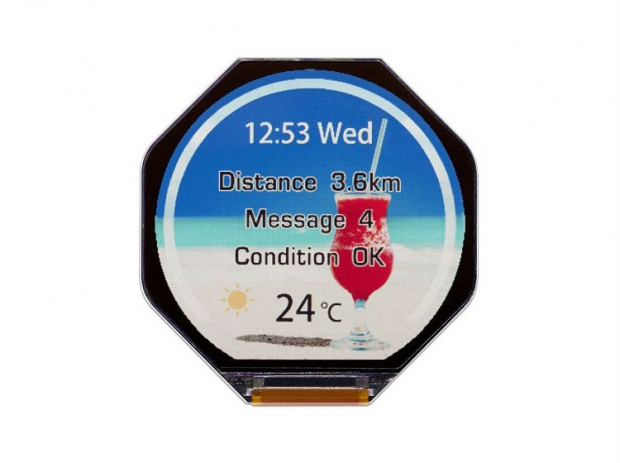The company said the new display will consume about 0.5% of what a comparable screen based on conventional LCD technology would need. The first unit has a 320x300 resolution and it’s a circular panel, with a diameter of 1.34 inches. As you can see, it’s not a perfectly round display, and there’s a small cut-out at the bottom, like on Motorola’s Moto 360, while the diameter is quite similar to LG's P-OLED display on the G Watch R.
JDI has not released the rest of the spec, so we can only guess at how it managed to create such a frugal display. We do know that it’s a reflective design, so it harnesses ambient light instead of traditional backlighting technology.
There is no word on brightness, contrast, or the number of colours the screen can support.
The good news is that reflective technology can drastically reduce power consumption, but there are a number of downsides. JDI announced a few reflective LCD displays a couple of years ago and they were capable of reproducing 5-36% of the NTSC colour gamut. Their contrast ratio was 30:1.
Sadly, we have no specs for the new smartwatch display, so we can only make an educated guess at this point – based on the company’s previous models.
In any case, JDI said the new tech would be ready to ship sometime next month. Coupled with more frugal small-core chipsets like MediaTek’s Aster, the technology could enable smartwatches capable of running a few days on a single charge, but great display quality, advanced features or elaborate operating systems like Android Wear would be off the table.




